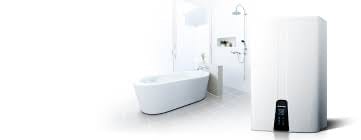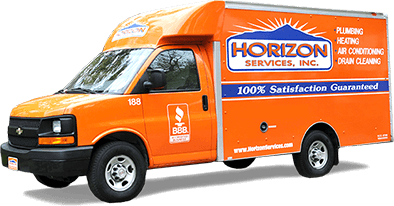
More and more consumers are installing tankless water heaters in their homes. For many people, they offer the opportunity for great savings and convenience. But they aren’t for everyone.
What Is A Tankless Water Heater?
You probably already guessed that tankless water systems do not use a tank to hold hot water. Instead, they heat the water as it flows through an advanced heat exchanger and then to the faucets and appliances in your home. Because there’s no holding tank, there’s less chance of a leak. And you save energy since you don’t have to constantly reheat the water in the tank.
Pros of a Tankless Water Heater
If you’re the last one out of bed in your household and typically find your water heater is out of hot water, you’re in the right place. A tankless water heater may well be your solution to your cold shower dilemma.
Because tankless water systems work on demand, they produce an endless supply of hot water. For most homeowners, that is the primary benefit of a tankless system. No more cold showers.
There are others, of course. Because there’s no storage tank, a tankless system is much less likely to leak or cause a flood.
And, by heating water only when you need it, a tankless water heater system will cut energy costs by 30 to 50%. A conventional system, after all, has to heat and constantly reheat the 50 (or more) gallons of water in the tank to maintain that reserve of hot water we all expect when we turn on the tap.
In addition to overall energy savings, a tankless system uses energy more efficiently, converting up to 97 percent of the fuel it consumes into heat for your water.
In addition, a tankless water system has a longer useful life, typically lasting up to 20 years, more than double the life expectancy of a traditional water heater.
As a result, it also has a reduced environmental impact compared to a conventional water heater. Because it runs only when you’re using hot water, it cuts water and energy consumption and produces fewer emissions. And since it lasts longer than a traditional system, it reduces end-of-service-life disposal costs.
About the size of a valise or small suitcase, a tankless water system takes up much less space than a water system with a tank. It is mounted on a wall, also saving floor space.
Plus, your hot water isn’t sitting in a storage tank, where bacteria and other harmful organisms might grow. Instead, it comes directly from your water system, meaning the water is cleaner and fresher.
Finally, tankless water systems usually qualify for federal tax credits and may also be included in state tax benefit programs.
Cons of a Tankless Water Heater?
Tankless water heaters aren’t for everyone. There are a few significant drawbacks:
Tankless systems are usually more expensive than a traditional unit, though tankless proponents say they recoup the difference in a relatively short time.
They’re not multi-taskers. A tankless system is designed to deliver water to one outlet at a time. So two people can’t take showers at the same time. Or you can’t do laundry and run the dishwasher all at once. That may be a deal-breaker for large households where mornings are packed with multiple, hot water uses in two or three bathrooms at once. It is an excellent choice, however, for hot tubs or detached bathrooms.
Lastly, if you live in an area with hard water, you may need a water softener. Lime and scale from hard water can limit the performance of a tankless water system and, if left unchecked, could cause lasting damage. That’s true, of course, of a conventional water heater.
If any of these apply to your situation, you should probably consider other water heater alternatives.
If you’re not sure, or you need water heater repair for your existing device, ask for an evaluation, or call us at 1-800-642-4419. If you are experiencing an emergency, follow these emergency shutdown procedures.


